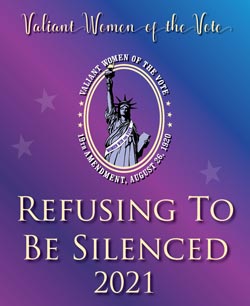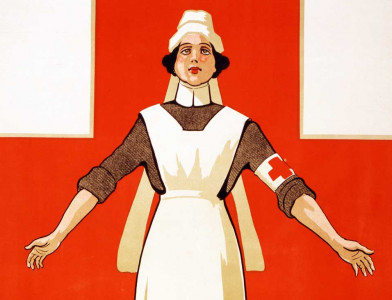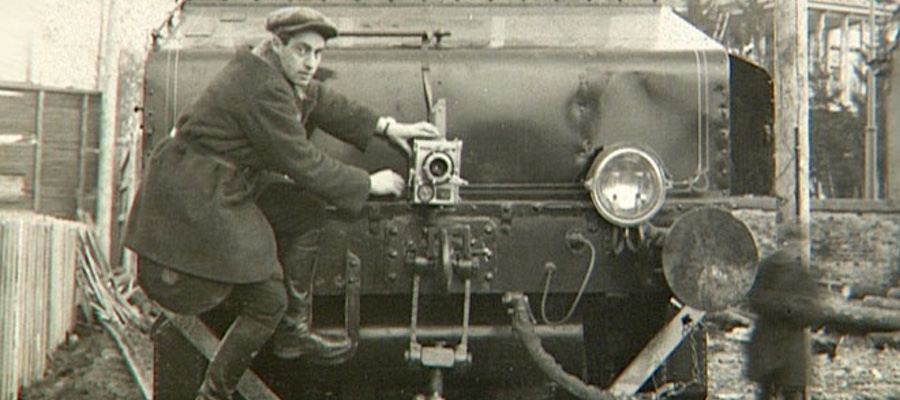Working women during World War II
Working women were not always working away from home. Prior to World War II women worked at home. The war demanded men to serve abroad in the armed forces, leaving millions of jobs at home. During these years, more than six million women replaced men, who left to fight the war, in private industry, professions and defense plants.
 World War II Memorial in Washington DC. Dedicated to the military service men who left their jobs to women at home.
World War II Memorial in Washington DC. Dedicated to the military service men who left their jobs to women at home.Consequently, a large propaganda campaign was launched to encourage women to seek non-traditional work away from home and fill the vacant positions. The War Manpower Commission (WMC), the American Management Association and the War Department working with the Women’s Bureau were the organizations behind the propaganda effort to lure women out of their homes. The Women’s Bureau was part of the Department of Labor. The War Department is a World War II term for today’s Defense Department.
Propaganda was used to change people’s attitudes toward the work women were required to do. The War Manpower Commission (created by Franklin Delano Roosevelt in the spring of 1943) targeted their efforts to four groups:
- Non-working women
- Those reaching working age
- Those performing tasks not essential to society
- Housewives
The concept of working women in America was a new idea
The nation-wide propaganda campaigns to recruit women workers and the large response by women workers to these campaign efforts had never happened before in American history. Until early in the war, employers had insisted that women were not suited for industrial jobs. Employers changed their minds when labor shortages began to threaten the war effort. The wartime needs for industrial workers temporarily ended the depression-era hostility toward working women.
As public opinion shifted to support women’s war work, posters and billboards appeared urging women to “Do the Job HE Left Behind.” Newspapers and magazines, radio and movies proclaimed Rosie the Riveter a war hero.
Opportunities for women opened up in a variety of occupations. Women found work as welders, electricians, mechanics and boilermakers. They operated street cars, buses, cranes and tractors. Women engineers worked in drafting rooms. Women physicists and chemists served in the major industrial laboratories.
More than two million women joined the war effort as clerical workers, nearly one million of whom were hired by the federal government.
Women also became police officers, taxi cab drivers, lawyers, physicians, statisticians, journalists and members of symphony orchestras replacing the men who left to fight the war. Women ran farms, planted crops and tended animals. They harvested tons of vegetables, fruits and grains.
For the duration of World War II this was women’s work. Women of all ages, races, shapes and sizes including those who completed higher education degrees became pioneers in the American workplace. Many women were very proud of their accomplishments and their contributions to the war effort. Women workers developed self-esteem and confidence. They knew their work efforts were making a difference. Many women enjoyed the work they were doing.
After the war, working women were needed at home
However, the prevailing attitude in America was that once the victory was won, women should go back to taking care of their husbands and children, leaving their jobs to returning soldiers and sailors.
 After World War II had ended, women were expected to work at home making quilts and performing other homemaking tasks.
After World War II had ended, women were expected to work at home making quilts and performing other homemaking tasks.Anticipating the end of the war, the War Manpower Commission (WMC) conducted its final propaganda campaign to recruit women war workers in early 1944. In late 1944, the War Manpower Commission (WMC) asked the Office of War Information (OWI) to stop all of its efforts to recruit women.
The government and industry began producing propaganda to encourage women to return to their homes. This propaganda promoted the idea that women would be serving their country by devoting all their time and energy to the care of their husbands and children.
Stories about women riveters, welders, scientists and taxicab drivers disappeared from the magazines and newspapers. The Office of War Information’s “War Magazine Guide” wrote articles about the best jobs for women in the post war years being traditional female roles of teaching, nursing and clerical work. Writers for the Writer’s War Board published stories about women workers who cheerfully gave up their work tools and lived happily ever after as full-time housewives and mothers.
Changing perceptions about working women
The men who had once worked at the heavy industry factories came back to reclaim their jobs. Men who hadn’t been working when they joined the war effort were offered jobs to thank them for risking their lives. By 1946, over three million women had left the work force and returned to full time jobs at home.
However, women had experienced what it was like to earn an income. This led to dissatisfaction with the perception of the best place for a woman was in the home and not the workplace.
Later generations of women fought for a woman’s right to have a career of her own. The stage was set for the Equal Rights Amendment movement and other women who aspired to successful careers of their own in the 1960s and 1970s. The perception of the idea that a women’s place was in the kitchen at home was forever changed.
Sources
Coleman, Penny. Rosie the Riveter – Women Working on the Homefront in World War II. New York: Crown Publishers, 1995.
Norton, Mary Beth and Katzman, David M., et al. A People and a Nation. Boston: Houghton Mifflin Company, 1996.
For more information visit this online National Archives resource.








